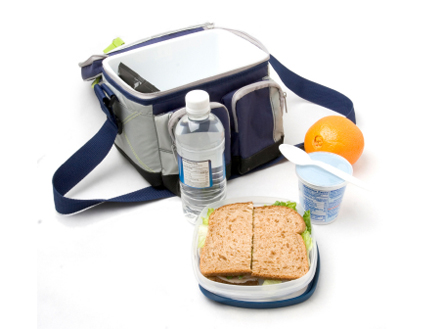Bag lunches invite disease, study finds
Problem poses special risks for young children
“Sack” lunches often pose a ticking bacterial bomb, a new study indicates. And including an ice pack or two — ostensibly to keep perishables at safe temperatures — won’t necessarily eliminate the risk.

Eight researchers — all but one from the University of Texas, Austin — used an electronic temperature gun to measure how cool individual packed lunch items were at nine private child-care centers. A food’s temperature was judged as unacceptable if it fell between the range of 4° and 60° Celsius (~39° to 140° Fahrenheit). The scientists performed their temperature checks at each facility three times, on randomly selected days, 90 minutes before they were to be eaten. Parents had packed the lunches, which were slated to be eaten by their preschoolers — 235 in all.
Roughly 40 percent of lunches containing perishable foods arrived without ice packs. More than 90 percent of meals did come in thermally insulated plastic containers — which was fortunate, since only about 12 percent of the lunches were refrigerated. The rest were left in a child’s cubby until meal time. (Ironically, some of the child-care facilities did have refrigerators that either were not routinely used or were used but sometimes not for at least 2 hours after a child arrived.)
Of 618 perishable foods packed in lunch bags with a single ice pack, only 14 food items were deemed to be at an acceptable temperature, the scientists report. “Even with multiple ice packs, the majority of lunch items (greater than 90 percent) were at unsafe temperatures,” the scientists report in the September Pediatrics. Of the 61 perishables bagged with multiple ice packs, only five foods were still at a germ-growth-inhibiting temperature 90 minutes before lunch time.
Perhaps most disturbing, even amongst perishables stored in a refrigerator, most “were in the unsafe temperature zone, a result perhaps of the nature of the lunch sacks, the internal temperature of the refrigerator, and/or amount of time at ambient temperature before refrigeration,” the scientists observe.
It’s important to note that the researchers reported no children as having developed food poisoning on the day their temperature checks were made. So their determination of any putative risk is based on the potential for germs inhabiting infected foods to mushroom to sickening levels.
Although the Texas scientists focused this study on preschoolers — because children under four develop 4.5 times as many foodborne infections as do adults 20 to 49 years old — anyone can be poisoned by improperly stored foods.
Food containers exist that can hold a food at its packed temperature for four to six hours. And these might make sense for certain casseroles that should stay hot or for mayonnaise-containing tuna- and potato salads that should stay well chilled.
But the biggest lesson here may be that we roll the dice with our health every time we trust in insulated lunch boxes or ice packs. Sure, most of the time we’ll dodge the bacterial bullet. But if and when legions of germs do successfully transform our lunch into their Petri dish, the price could be high — even deadly.







